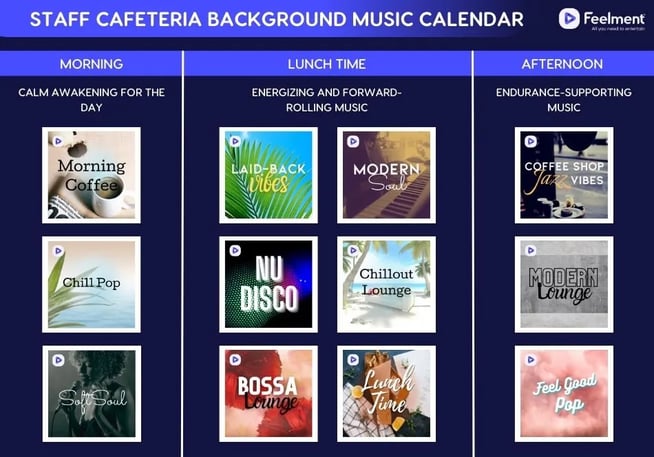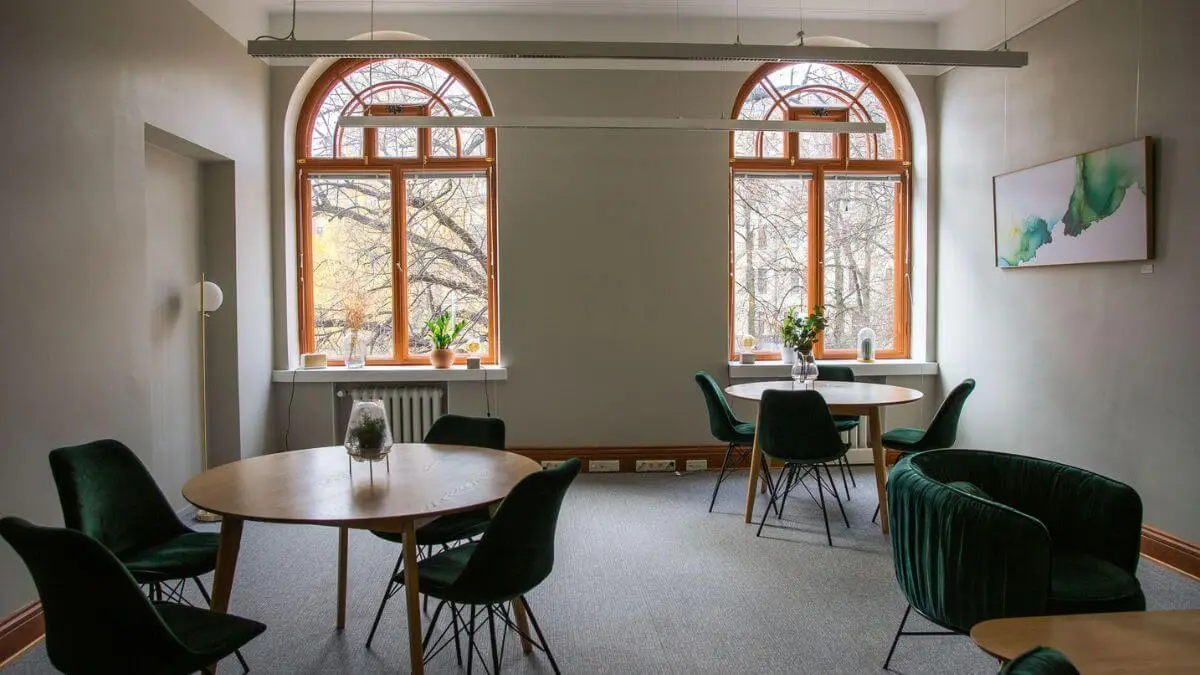What kind of background music for a staff restaurant - and why?
Memories of school meals have etched strong images in many minds: long lines, growling stomachs, and the buzz of various noises. The same atmosphere may continue from year to year and from cafeteria to cafeteria, from the school road to the workplace. Hunger may ease, but does the mind calm down? Comprehensive recovery is an essential part of the lunch break, so while we feed our stomachs, it's also the right time to nourish our minds. Adding background music to the dining area is an easy way to expedite recovery and enhance the comfort of the dining environment.
The impact of background music during the lunch break
Music has been proven to have an impact on both the body's physical functions and the pleasure system. During lunch breaks, it's advisable to favor background music over silence, as music is an effective way to regulate stress levels and aid in recovery from overstimulation. When the right kind of music is added to the lunch break, it also helps the mind relax.
"Music maintains a person's alertness and uplifts the mood. The mind can take a break more quickly when the background music takes thoughts away from work matters. At the same time, endurance for the rest of the day improves," says our music expert Matti.
Noise causes fatigue
The acoustics in the lunch cafeteria are not the most pleasant, as they include not only speech but also a lot of loud and sharp sounds, such as clattering of dishes or the scraping of knives. Continuous noise takes its toll, as our central nervous system has to work to filter out unnecessary sounds. This leads to a lack of concentration and fatigue, reflected in a decrease in performance. Background music is an excellent aid to support our central nervous system, as it helps mask precisely these tiring and distracting sounds.
What kind of music is recommended to play in the lunch cafeteria?
The purpose of the lunch hour is to support recovery, ensuring that work matters are efficiently set aside. Simultaneously, the mind relaxes, and returning from lunch, thoughts are refreshed. In music expert Matti's recommendations, sung and energizing playlists take center stage:
"Sung music disrupts the contemplation of work matters and provides just the right stimuli. It's advisable to include well-known songs as they evoke memories of various situations and people."
Positively-toned and smoothly progressing music is a good choice for the lunch break. When selecting playlists, it's recommended to specifically favor music with a moderate tempo, as overly calm music can be tiring, and overly fast music can be challenging to engage with.
”Returning to work should not be too difficult.”
Staff cafeteria playlist recommendations
Our music expert Matti has designed a background music calendar suitable for the staff cafeteria, featuring examples of playlists suitable for the dining area. The calendar includes playlist suggestions not only for lunch breaks but also for mornings and afternoons, allowing staff cafeterias to play background music outside of lunch hours if needed.
Morning: Calm awakening towards an efficient workday. Background music, for example, during coffee breaks.
Lunchtime: Music that supports comprehensive recovery. Playlists feature moderate-tempo and energizing songs.
Afternoon: Music supporting endurance, suitable for afternoon coffee breaks.

What technology does playing music require?
The choice of audio equipment depends a lot on the type of space where background music is being added. The size of the space and existing audio solutions are always taken into account when planning the overall setup. However, background music can also be played with very simple devices and may not necessarily require cables, space modifications, or significant investments.”For smaller spaces, a high-quality Bluetooth speaker like the Harman Kardon Onyx is sufficient”, says our hardware expert Jussi.
In addition to the speaker, playing background music requires nothing more than a tablet or a Windows-based computer with the Android or Windows operating system, where you can download the Feelment app. Our experts are always available to assist in choosing the right hardware and making the purchase. For more information about our background music service, click here.
Don't forget about music licenses! The "Music in Educational Institutions" license is needed for playing background music in educational institution spaces such as student restaurants. The "Background Music in Staff Spaces" license, on the other hand, covers playing music in the staff cafeteria, where no external individuals visit. The same license also covers playing background music in other company workspaces, such as break areas or office spaces. Read more about the benefits of background music in office spaces in our previous post: What kind of background music for the office - and why?
If anything is on your mind, please don't hesitate to contact us! We would be happy to provide more information about our background music service and its benefits.
Share this
You may also like
These related stories.

Music license for restaurants - What license do I need and why

Trends of 2022 through the lens of music

